3D printing in the automotive industry lays the foundation for the next stage of automotive production under the keyword Industry 4.0. Learn how additive technologies are transforming the automotive industry and what growth opportunities are predicted for the 3D market.
Growth market 3D printing
According to a Strategy& study, the global market for 3D printing industrial products will grow by between 13 and 23 percent per year and reach a volume of 22.6 billion euros in 2030. In the automotive industry, the market volume is expected to grow from 0.34 billion euros (2015) to 2.61 billion euros (2030), which corresponds to an increase of 15 percent.

Source: Strategy & Analysis about 3D-printing
While the focus of additive processes so far has been on prototype development, according to the study the focus in the future will shift to the production of individual components in small quantities. According to analysts, the strongest growth drivers are:
- optimized printing methods and materials
- stronger implementation of additive manufacturing in business processes
- Implementation of new business models
"In-house printing saves producers significant time and money compared to the previous supply chain. Just-in-time delivery is thus developing into on-demand 3D printing. This is where specialized 3D printing suppliers will be ahead of the game and divide the lion's share of the value chain among themselves," explains Harald Dutzler, Partner at Strategy& in Austria.
According to Strategy& , OEMs will also set up their own certified 3D printers in their authorized workshops in the not too distant future, which will print original spare parts if required, thereby increasing after-sales margins through reduced logistics and storage costs.
New business models through innovative 3D printing materials
According to the market study "Global 3D Printing Materials Market in Automotive Transportation, Forecast to 2024" by Frost & Sullivan, the market for 3D printing materials in the automotive industry is expected to grow at double-digit annual rates to up to 576.5 million euros by 2024. This corresponds to an impressive average annual growth rate of 17.8 percent (2017 to 2024).
In the future, 3D printing technologies will lead to the development of specialized micro-factories for the production of custom parts, while the automotive industry will move away from general mass production and towards mass customization.
"3D printing materials will play a critical role in the transformation of global automotive business models by enabling decentralized and localized production of parts and solutions," said Sayan Mukherjee, Visionary Science Senior Research Analyst at Frost & Sullivan. "This will completely change the mega factories within the next two decades."
The market researchers also cite five key growth strategies in the global market for 3D printing materials in automotive and transportation:
- Focusing research and development on the production of novel plastic formulations (resins, powders and filaments) that enable "real" applications and leave prototype development behind.
- The focus is on regional additive manufacturing strategies in Europe and North America, where the most important pioneers in automotive engineering are located.
- Working with machine builders to develop products, business models and market as they have control over the different compatibility of printing materials.
- The strengthening of the sales base in markets such as China, India and other Asian countries, as these absorb new developments more slowly and are structured in a cost-sensitive way.
- Understanding the market to address the dynamic needs of the future in the industry and adapt to disruptive trends.
However, experts see major challenges in the 3D market in the uncertain supply of materials, the lack of consistency in the final production phase and higher costs. However, the rationalization of material prices is likely to lead to an acceptance of 3D printing by OEMs.
3D printing projects in the automotive industry
The use of 3D printing technology for direct component manufacturing has so far been hampered by the high degree of automation of the production facilities and the large quantities involved. The decreasing costs for additive manufacturing plants, the possibility of integration into manufacturing systems as well as the imminent change towards electro mobility have led in recent years to the development of systems and business models that increasingly exploit the potential of additive production. Three examples are presented below.
1. The first 3D electric car in mass production
3D printing and electric drive open up the market for small manufacturers as well. This is impressively demonstrated by the Italian start-up X Electrical Vehicle (XEV). In cooperation with the Chinese company Polymaker, XEV plans to launch the first electric car in China in the second quarter of 2019.
The so-called "low-speed electric vehicles" (LSEV) will be produced almost entirely in just three days using a 3D printer. Production is to take place in a mega factory in Jiangsu (China). The LSEV consists of only 57 plastic parts, weighs 450 kilos, has a top speed of 70 km/h and a range of 150 kilometers. The entry-level prices of the city car will range between 7,500 and 10,000 euros.
2. Micro factory from LM Industries
"Small series instead of mass production" is the motto of the innovative car manufacturer Local Motors, which has been producing the bus "Olli" and the car "Strati" with the 3D printer for two years now. The company recently restructured itself under the new company LM Industries Group Inc. with the Launch Forth platform and built the first micro factory in Chandler (Arizona). The factory does without mass production and concentrates on the production of special vehicles in small series.
The 90 percent 3D-printed Olli is one of the vehicles that rolls off the assembly line. The innovative shuttle bus runs autonomously and has intelligence based on self-learning algorithms. The electric shuttle bus has been in use on the campus of the University of Buffalo as a means of transport since August. An unmanned cargo system and a modular logistics vehicle are the next two projects planned by LM Industries on behalf of the US Navy.
3. Cost savings at General Motors
The introduction of 3D printers has already led to significant cost savings for many manufacturing and development companies. The assembly plant of the American car manufacturer General Motors, for example, claims to have achieved cost savings of more than 300,000 US dollars with the purchase of a 3D printer three years ago. In the future, the plant expects annual cost savings in the millions.
To drive 3D printing forward, General Motors recently entered into a partnership with Autodesk to produce lower cost and lighter vehicle parts using 3D printers. According to Autodesk, tools, fixtures and fittings can now be produced at a fraction of the cost. For example, a 3D-printed tool used to align engine and transmission identification numbers costs less than $3 at General Motors. Traditionally produced, the tool would cost $3,000. In addition, downtime due to a defective or faulty tool can be significantly reduced as new tools are manufactured on site.
Conclusion: Competitive advantages through 3D printing in the automotive industry
Traditional, central production lines are less and less meeting the requirements of an agile market. 3D printing enables individual parts at the touch of a button. Companies that successfully use additive technologies in their manufacturing processes secure a real competitive advantage through
- Flexibility through localized production (micro factories)
- Cost-effective production of components
- Reduce logistics costs with on-site 3D printing
- Rapid response to customer feedback
- Flexible adaptation to local market preferences
„Mass production is a relic of the past. We are in the midst of a mobility revolution in which current means of transport no longer match rapidly changing buyer preferences. Today's world is moving too fast to maintain the traditional manufacturing concept.“
John B. Rogers, CEO and co-founder of LM Industries


